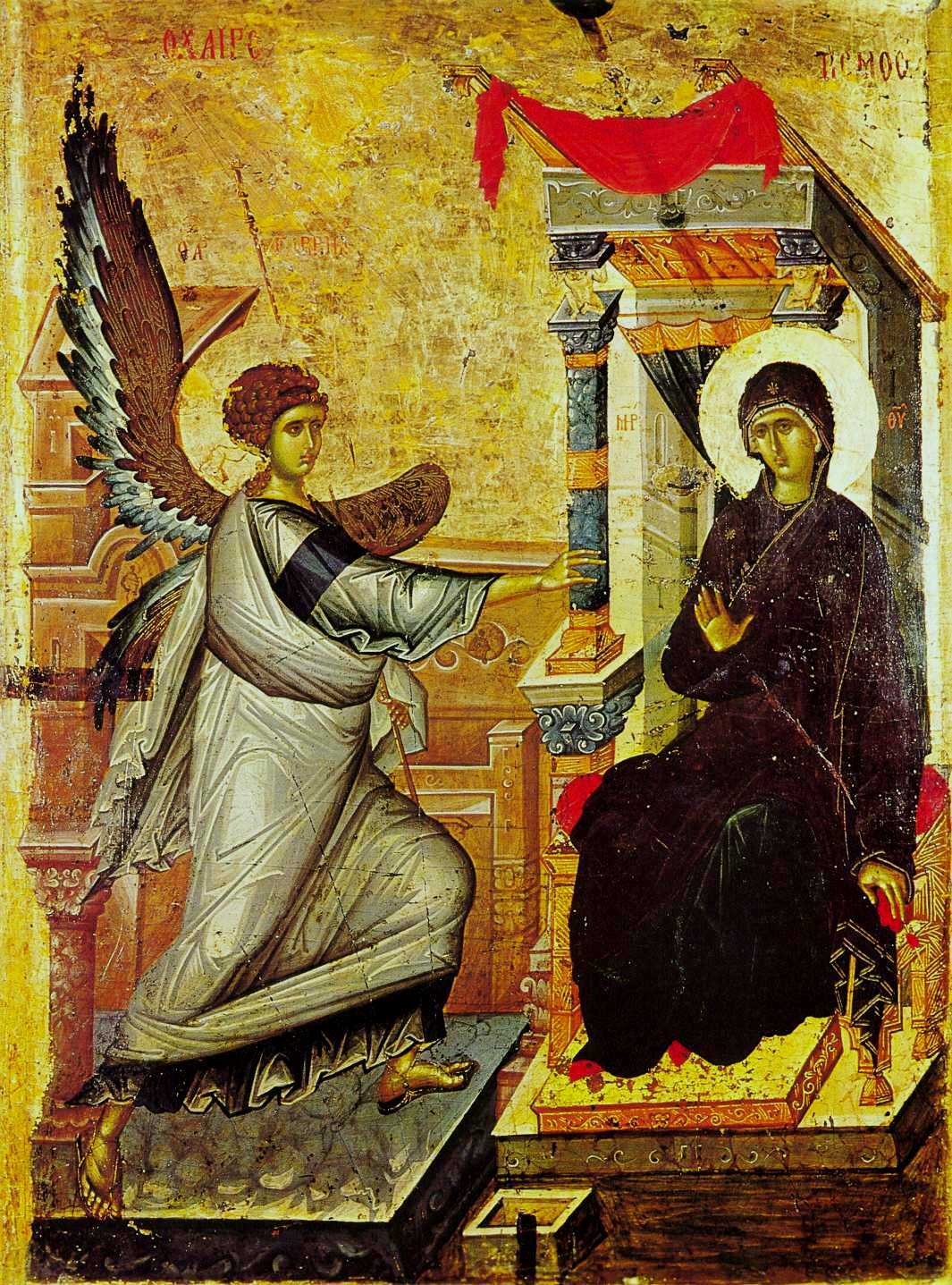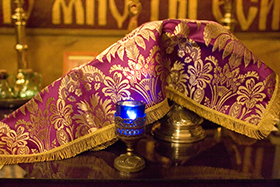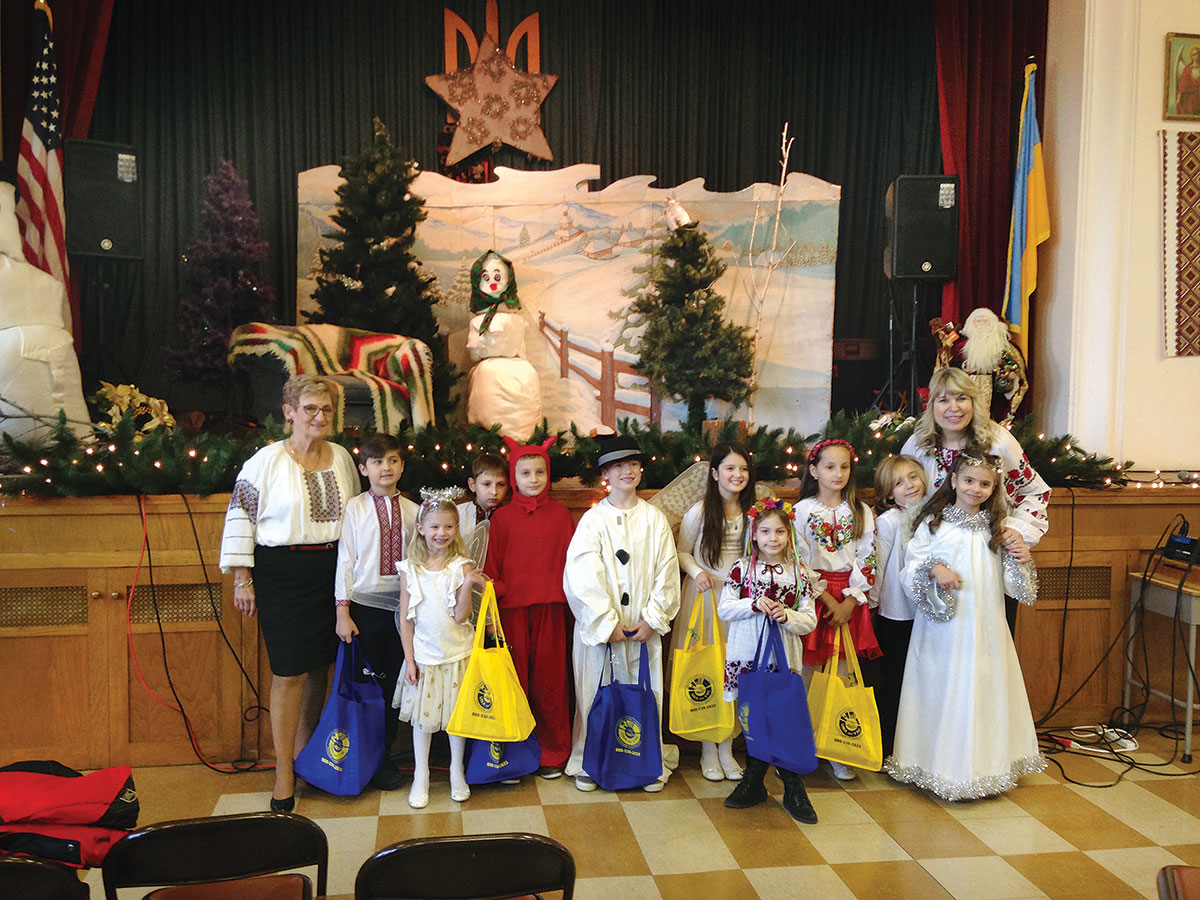 Today the Church celebrates summit of our salvation.
Today the Church celebrates summit of our salvation.
The Annunciation of Gabriel to Mary that she would be the Theotokos almost always falls during the Great Fast. (*) According to the liturgical norms, it is celebrated on whatever day it falls, and the Divine Liturgy is celebrated, even on Good Friday. (**) The meaning of the Annunciation, however, is in conformity with the meaning of the Great Fast. The Great Fast is a journey from the sin of Adam and Eve to the Resurrection of our Lord. It is a passage from human pride to fidelity to God’s plan of salvation. The sin of Eve, which became the fundamental sin of the whole human race was to choose one’s own plan for salvation over God’s. It’s result, though, was death. Jesus in the resurrection, takes the power of death and twists it into life, as St. Paul said, “We were indeed buried with him through baptism into death, so that, just as Christ was raised from the dead by the glory of the Father, we too might live in newness of life” (Romans 6:4).
Jesus was able to do this because he became a human being in the womb of Mary, who replaced Eve’s disobedience with obedience to God, “Behold, I am the handmaid of the Lord. May it be done to me according to your word. (Luke 1:38)” Thus, God “condescended” (that is, he came down to be with us) so that the plan of God could be lifted up. “Though he was in the form of God, [Christ] did not regard equality with God something to be grasped. Rather, he emptied himself, taking the form of a slave, coming in human likeness; and found human in appearance, he humbled himself, becoming obedient to death, even death on a cross” (Philippians 2:6-8). Therefore, the Annunciation is a part of Pascha, as Melito of Sardis explained in his Paschal Homily: “And indeed there were many other things proclaimed by numerous prophets concerning the mystery of the passover, which is Christ, to whom be the glory forever. Amen.”
When this one came from heaven to earth for the sake of the one who suffers, and had clothed himself with that very one through the womb of a virgin, and having come forth as man, he accepted the sufferings of the sufferer through his body which was capable of suffering. And he destroyed those human sufferings by his spirit which was incapable of dying. He killed death which had put man to death” (65-66). We sing, “Today is the summit of our salvation.” (Troparion)
 Everlasting life, promised in Holy Communion, is a central teaching of our faith. In the Nicene-Constantinopolitan Creed, which we recite in every Divine Liturgy and also frequently in the Divine Praises, says, “I expect the resurrection of the dead and the life of the world to come.” It is interesting that here we say, “I expect” rather than “I believe.” This is because this life beyond death is not only a matter of faith but also a matter of hope. And both faith and hope are virtues beyond human power alone, but need also the grace of God. In a way, we do not understand this life beyond death, probably we can that just as a child in the womb does not understand what it is to live in the world.
Everlasting life, promised in Holy Communion, is a central teaching of our faith. In the Nicene-Constantinopolitan Creed, which we recite in every Divine Liturgy and also frequently in the Divine Praises, says, “I expect the resurrection of the dead and the life of the world to come.” It is interesting that here we say, “I expect” rather than “I believe.” This is because this life beyond death is not only a matter of faith but also a matter of hope. And both faith and hope are virtues beyond human power alone, but need also the grace of God. In a way, we do not understand this life beyond death, probably we can that just as a child in the womb does not understand what it is to live in the world. Tonight, March 13th, Father Iura will serve the Divine Liturgy of the Pre-sanctified Gifts
Tonight, March 13th, Father Iura will serve the Divine Liturgy of the Pre-sanctified Gifts  Children received Christmas gift bags prepared and distributed by Gloria Horbaty, UNA advisor and financial secretary of Branch 414 in New Haven. The children participated in the annual St. Nicholas play on December 23, 2018, that was presented by St. Michael School of Ukrainian Studies.
Children received Christmas gift bags prepared and distributed by Gloria Horbaty, UNA advisor and financial secretary of Branch 414 in New Haven. The children participated in the annual St. Nicholas play on December 23, 2018, that was presented by St. Michael School of Ukrainian Studies.